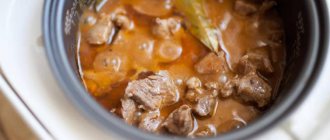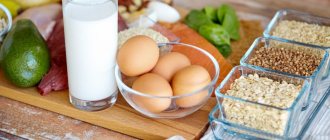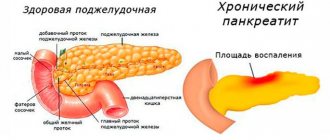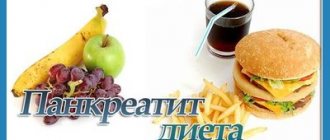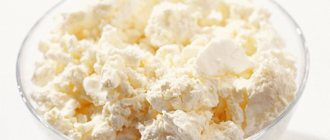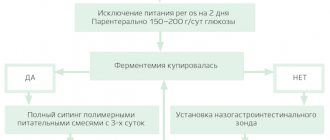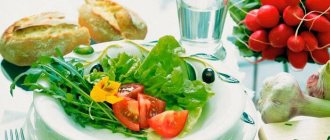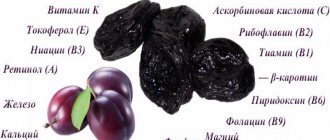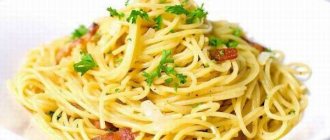The basis of the diet for inflammation of the pancreas consists of cereal dishes. The recommended products include semolina porridge: for pancreatitis, such food not only does not harm, but also has a beneficial effect on the digestive system. To get as much benefit as possible from eating semolina, you must follow several important rules regarding the introduction of porridge into your diet.
The basis of the diet for inflammation of the pancreas consists of cereal dishes.
Pancreatitis and the diet of a person with such a diagnosis
Steamed dishes - diet No. 5
Often patients, having received a diagnosis, perceive it as a death sentence, which clearly does not improve their mood and ability to set the body up for recovery. Another category of patients experiences a feeling of irritation from the need to change their habits and unwillingness to give them up, and begins to bully their loved ones. They say about such people - a bilious person.
Both of them can be understood: the basic function of the body has been disrupted. However, it should be borne in mind that according to statistics, about 80% of pancreatic diseases are caused by a person’s careless attitude towards his body. This is constant overeating, excess fatty, sweet and salty, fried and smoked foods. Alcohol has the most destructive effect on the organ.
If we talk about changing the diet, it is aimed at eliminating all of the above destructive factors. Otherwise, the patient’s table remains varied and nutritious. As for tasty food, eating habits change over the course of life: having learned to savor the dishes of their new diet, very soon a person recognizes them as truly tasty.
Beneficial properties for illness and how it can harm
Semolina is finely crushed wheat. The finished porridge has a delicate consistency and does not irritate the mucous membrane of the inflamed pancreas. This important property makes a semolina dish an indispensable product in a diet that involves mechanical sparing of the gastrointestinal tract during pancreatitis.
Once in the gastrointestinal tract, this product gently envelops the walls of the digestive organs, reduces inflammation and promotes the removal of harmful substances, fats and mucus.
In addition, semolina helps eliminate diarrhea, which is often observed with pancreatitis.
The dish satisfies hunger well and is easily digestible; it does not cause heaviness in the stomach, bloating or pain due to its low fiber content.
Semolina porridge contains a lot of protein, which accelerates the restoration of pancreatic tissue during pancreatitis and normalizes its functioning. And although today it is increasingly argued that this product is the least healthy of all cereal dishes, we must not forget that semolina contains a number of macro- and microelements vital for humans, most of which are necessary for the normal functioning of the digestive system. These are B vitamins, tocopherol, zinc, magnesium, cobalt, potassium and some other trace elements.
Semolina contains B vitamins.
When properly prepared and following all recommendations for consuming semolina porridge, this product does not harm the body of a person suffering from pancreatitis. A negative reaction can occur in those rare cases when the patient has gluten intolerance. The large amount of calories contained in semolina does not affect the health and weight of a person’s body, because in case of pancreatitis, semolina porridge is introduced into the diet infrequently and in moderate portions.
We recommend reading: Is it possible to eat millet porridge if you have pancreatitis?
Diet No. 5 for chronic pancreatitis
The diet, developed by Soviet medical scientists for patients with chronic pancreatitis, is aimed at ensuring the most complete calm of the pancreas and reducing its secretion. This is achieved through the correct choice of the chemical composition of food, the format of dishes and the volume of a single meal.
In practice, this means the predominance of protein foods, a reduction in carbohydrates and fats, and the rejection of rough foods (plant fiber) and heavy meat. It is preferable to steam dishes, which is also beneficial for a healthy person. If there is a chronically ill person in the family, then by purchasing a steamer, you can provide him with adequate nutrition and reduce the risk of illness for other family members.
If the disease worsens, it is recommended to completely stop eating for a day or two, maintaining strength with unsweetened, lukewarm rose hip decoction.
Is semolina harmful for pancreatitis?
One can only talk about the harmful properties of semolina in relation to children, and even then of infancy. It is for them that the high gluten content in semolina and the presence of phytin, which interferes with the absorption of calcium and reduces its content in the child’s bones, are dangerous. For adults, gluten and phytin do not pose a danger, if only because semolina is not the main or only food for them. For the same reason, the low (compared to other cereals) content of vitamins in semolina is not particularly important.
Regarding the frequently encountered statement about the high calorie content of semolina (about 330 kcal), it should be noted that most of the popular dishes made from it (porridge, soups, casseroles) contain very little grain. And the calorie content of the same 100 g of semolina porridge cooked in water no longer exceeds 100 kcal.
Dietary recommendations
Not only a diet, but also a certain way of eating
In case of chronic pancreatitis, you should adhere not only to a diet, but also to a special way of eating:
- Hot and cold drinks and dishes are strictly prohibited, any food must be warm; you should stick to eating at the same time every day;
- the daily nutritional intake should be divided into 5-6 meals; it is strictly forbidden to overeat or endure hunger for a long time;
- the content of protein foods in the menu should predominate, the pancreas is restored on it; the amount of fat should be reduced to a minimum, including vegetable oil;
- the daily intake of salt is limited to 10g;
- You should be critical of the list of permitted products, focusing on your individual well-being. If you feel unwell when eating any dish or product, it should be immediately excluded from the diet;
- New foods should be introduced into the diet carefully, in small portions.
- at the slightest discomfort, you should refuse until the functioning of the pancreas is more completely stabilized;
- The recommendation to chew food thoroughly is also appropriate for a healthy body, but if you have a disease of the pancreas, this rule should be observed especially carefully, even if puree soup is served.
This significantly reduces the amount of food needed to receive a signal of satiety and, therefore, eases the load on the digestive system.
Porridges included in the diet of a patient with pancreatitis
Porridges are dishes that add variety to the patient’s poor menu. The following will be beneficial: porridge made from rice, oatmeal, buckwheat, barley. They will cause harm - from millet, corn, wheat, peas, lentils and chickpeas.
Rice porrige
The first porridge consumed after an exacerbation will be rice. The polished cereal is boiled over low heat using water or diluted milk in the proportion: a liter of water and rice. When the disease subsides, the finished cereal takes on a free-flowing appearance; it is allowed to add salt, butter, and granulated sugar.
Rice porridge is healthy: it is rich in nutrients, prevents hunger, and can be easily digested. The dishes do not irritate the digestive system and carefully cleanse the body of waste products. Rice porridge exhibits an enveloping effect that protects the walls of the esophagus from irritants.
Due to its high fixative ability, porridge is not recommended for consumption in case of constipation - a frequent companion to inflammation of the pancreas.
Oatmeal
Oatmeal is considered a mucous porridge. Famous for its enveloping qualities, it is well accepted by the body, quickly absorbed in the gastrointestinal tract, saturating the body with proteins and fatty acids. Porridge neutralizes the excess of enzyme substances that occur during pancreatitis, has a stimulating effect on the digestive system, and is indispensable for difficulties with peristalsis.
Buckwheat
Buckwheat showed the highest score among porridges in terms of the composition of vitamins, minerals and energy benefits. The content of a large number of cellular fibers increases the effectiveness of intestinal cleansing and makes the body resistant to a number of pathogens. Buckwheat helps regenerate pancreatic cells and relieves inflammation in the gastrointestinal tract. The porridge contains few calories and is indicated for consumption from the first hours of pancreatitis. Buckwheat plays a cleansing, stimulating, enzyme-generating role and improves pancreatic functionality. With any type of cereal grinding, the usefulness does not decrease. This makes buckwheat porridge the first choice for illness.
During an exacerbation of the disease, it is necessary to consume buckwheat, boiled until sticky. Oil and salt are prohibited. When the patient’s condition improves, the patient is allowed to take pre-chopped buckwheat soup. At the moment of attenuation, it is allowed to consume buckwheat in crumbly form. You can add butter, sugar or bee products. Buckwheat, diluted with kefir, has a cleansing ability that restores the functioning of the pancreas.
Barley porridge
Barley plays an important role in pancreatitis, exhibiting the ability to remove toxic substances, envelop the mucous surface of the esophagus, relieve pain, relieve inflammation, creating a protective coating for the intestines.
The downside of cereal is its excessive hardness. For the purpose of normal digestion, it is necessary to cook the cereal for a long time and then rub it through a sieve.
Wheat and barley porridge
Cereals contain a lot of gluten, vitamin B, potassium and other useful substances. The composition of the cereal is low in calories.
Wheat porridge for pancreatitis improves metabolism and the functioning of the digestive tract, removes negative elements from the human body. Due to the extreme carbohydrate content in pancreatitis, millet is consumed in limited quantities, in small portions and infrequently.
Barley porridge is prohibited. The reason was an excess of carbohydrates, which causes difficulties with digestion. Barley porridge can be eaten in the form of puree during the complete attenuation of the disease and infrequently.
Millet for pancreatitis
Millet porridge for pancreatitis is allowed for infrequent consumption during the decline of the disease. Millet with pancreatitis is not digested by the human intestines, creating a large load on the diseased pancreas.
Corn and bean porridge
Corn does not lose its hardness even after boiling for a long time. The fiber contained in the composition creates great difficulties with digestion. Including corn in the diet is indicated for indolent forms of the disease and is extremely rare.
Peas, chickpeas, and beans contain an increased amount of coarse fiber, which causes flatulence and other unpleasant symptoms. Porridges from the listed crops are prohibited, even during relief of the disease. On rare days of consumption, you are allowed to cook such porridges infrequently, eat a little at a time, chewing thoroughly.
Diet No. 5 - list of allowed foods
Fish in a slow cooker is not only healthy, but also tasty
For pancreatitis in the chronic stage, the following foods and dishes from them are allowed:
- bread - wheat bread made from premium flour, yesterday's baked bread (if fresh, then dried), crackers made from it, unsweetened and low-fat dry biscuits (crackers);
- cereals - oatmeal, buckwheat, semolina, rice in the form of semi-viscous or mashed porridges, cooked in water or with the addition of milk; cereal casseroles, puddings, soufflés with cottage cheese and adding a small amount of butter or sour cream;
- Only boiled, well-cooked pasta is allowed;
- dairy products - low-fat and non-acidic cottage cheese can be consumed in its natural form or dishes made from it (casseroles, soufflés, puddings); hard cheese with low fat content and without spicy additives;
- sour cream, cream, butter are used for seasoning soups and cereals; fermented milk drinks are not too sour; skimmed whole milk, diluted with water - for making soups and cereals;
- meat and poultry - lean beef or veal, skinless chicken or turkey, rabbit. Use boiled. Meat dishes: chopped or ground in the form of steam cutlets, meatballs, beef stroganoff in low-fat sauce, puree, souffle, quenelles without hot seasonings;
- eggs - chicken egg white in the form of a steam omelet is recommended; It is better to discard the yolk; you can use one no more than 2 times a week, diluting it in half with water;
- fish - low-fat varieties: boiled in whole pieces or ground in the form of steam cutlets; boiled can be prepared in the form of aspic;
- vegetables - potatoes, carrots, beets, pumpkin, zucchini, cauliflower, green peas: used boiled or baked, preferably in the form of puree or cream soup;
- soups - vegetarian with vegetable broth or weak chicken broth. Vegetables are prepared in the form of pureed puree soup, adding half a spoon of sour cream when serving. Chicken soup is seasoned with noodles or well-boiled, pureed cereal;
- fruits and berries - ripe, non-acidic, can be eaten raw or pureed; apples should be baked. Pureed compotes, jellies, and mousses are prepared from dry and fresh fruits, using a little sugar or its substitute (sorbitol, xylitol) for sweetening;
- drinks - weak tea with lemon or milk without sugar or slightly sweetened, rosehip decoction, fruit juice without sugar diluted half with water;
- daily intake of butter 30 g, refined vegetable oil 10-15 ml (less than a tablespoon), added when preparing dishes.
Semolina in the patient's diet
Semolina is carefully crushed wheat. Food prepared with the addition of cereals has the most delicate taste, soft mucous structure, and does not require additional grinding. Semolina is quickly absorbed, provides a feeling of satiety, and easily coats the walls of the esophagus, preventing irritation. Porridge occupies a leading place in the treatment of the inflammatory process in the pancreas.
The benefits of semolina
Semolina for pancreatitis exhibits a number of useful qualities:
- The structure is not rough, which is important during the inflammatory process.
- When boiled, it acquires a slimy consistency. By covering the walls of the esophagus, it prevents the penetration of pathogenic microbes to the source of the disease, and helps remove excess mucus and fatty substances from the body.
- It contains a lot of protein, which has a beneficial effect on the healing process of the disease.
- Does not contain plant fibers, preventing the occurrence of excessive gas formation.
- Semolina is filled with useful substances that are preserved in their original form during heat treatment.
Harmful qualities of semolina
The cereal contains gluten and phytin, which are harmful to babies and interfere with the accumulation of calcium in the body. For patients with inflammation of the pancreas, the substances are harmless; semolina is not considered the main source of nutrition for an adult.
As for the abundance of calories in semolina: a small amount of cereal is needed to prepare the dish; calorie counting will not play a decisive role.
Semolina during exacerbation of the disease
Semolina spread in water is the first dish a patient is allowed to eat during an exacerbation of the disease. Already a couple of days after the incident, the semi-liquid consistency in its pure form is allowed to be taken by the patient in minimal doses. By the end of the first ten days of the disease, it is allowed to eat semolina in the form of dessert, soup, or use it as an additional component in minced meat dishes.
Semolina during the period of attenuation of pancreatitis
During the period of decline of the disease, other dishes made from semolina are added to the patient’s diet: sweet porridge, soups seasoned with semolina products, manna. Cottage cheese casseroles with the addition of semolina are welcome. Baking and adding to minced meat and fish are allowed. Semolina is allowed to be eaten once every two days, replacing it with healthier cereals in the menu.
Diet No. 5 - list of prohibited foods
Proper nutrition is the key to successful treatment
In chronic pancreatitis, the following foods and dishes are prohibited:
- fresh wheat bread, rye bread, baked goods, puff pastry and shortcrust pastry products;
- soups with meat and fish broth, strong vegetable and chicken broth, mushroom soups, dairy soups with undiluted milk, cold soups (okroshka), sour soups (cabbage soup, borscht);
- all fatty meats, pork, duck, goose, liver, brains, kidneys, sausages, smoked meats, canned food;
- fatty fish, fried and stewed, smoked and salted, canned fish and caviar;
- fried and hard-boiled eggs;
- all crumbly porridges and limit the consumption of dishes made from millet, corn, barley, and pearl barley;
- from vegetables, avoid legumes, mushrooms, white cabbage, eggplant, radishes and radishes, turnips, sweet peppers, sorrel, spinach, onions and garlic, tomatoes and sauces made from them;
- all spices;
- from fruits: grapes, banana, dates, figs;
- confectionery products: jam, chocolate, caramel, ice cream, cakes;
- drinks: coffee, strong tea, cocoa, grape juice, soft drinks with gas;
- alcohol.
Recipes for preparing semolina porridge for pancreatitis
You can prepare semolina porridge for therapeutic nutrition for pancreatitis in the following way:
- Mix a quarter cup of cereal with 100 ml of water.
- Pour 1 glass of milk diluted with the same amount of water into a saucepan, bring to a boil, add a pinch of salt and 1-2 tsp. Sahara.
- With constant stirring, pour the semolina combined with water into the pan and boil for 2 minutes, continuing stirring.
During the period of remission, the finished dish can optionally be supplemented with 5 g of butter or 1-2 tsp. honey, jam, fresh bananas, apples. In the absence of exacerbations of pancreatitis for a long time, cereals can be cooked only in milk, without adding water (for 60 g of semolina, 500 ml of low-fat milk).
